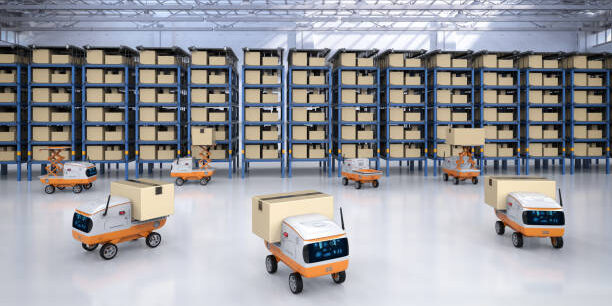The logistics and warehousing sector is on the verge of a major transformation as the global market for autonomous mobile robots is projected to surge to over 18 billion USD by 2032. With an impressive growth rate of 22.6% annually, this advancement is set to redefine operational efficiency, speed, and flexibility within modern supply chains.
Driven by the continued rise of e-commerce and growing pressure for faster fulfillment, autonomous mobile robots are rapidly being adopted across warehouses worldwide. These smart machines are designed to navigate dynamic environments, transport goods, and work in tandem with human teams—boosting productivity and reducing dependency on manual labor, especially in the face of ongoing workforce shortages.
Technological progress has played a vital role in this shift. Enhanced by artificial intelligence, real-time mapping, and advanced sensors, these robots now possess the ability to make intelligent decisions on the move. Innovations such as route optimization, obstacle detection, and integrated warehouse management system compatibility are enabling warehouses to become more adaptive, accurate, and responsive to market demands.
However, despite the promising outlook, the path to large-scale adoption presents challenges. High initial investment costs and integration complexities—especially for small and medium-sized businesses—remain significant barriers. Effective planning and training are essential to ensure smooth implementation and collaboration between human operators and robotic systems.
Nonetheless, the concept of smart warehousing continues to gain momentum. As supply chains evolve toward greater automation, autonomous mobile robots are expected to become critical tools for supporting just-in-time inventory, dark warehouses, and micro-fulfillment centers. Their flexibility and scalability make them ideal for high-volume sectors such as retail, automotive, and healthcare logistics.
Regionally, while North America currently leads in adoption, the Asia-Pacific region is rapidly emerging as a hotspot for growth, driven by industrial expansion, e-commerce penetration, and government support for automation and innovation.
As supply chains embrace digital transformation, autonomous mobile robots are not just enhancing operations—they are shaping the future of logistics as intelligent, agile, and sustainable systems.
#ICTTMNews #LogisticsNews #BreakingNews #WarehouseUpdate #SupplyChainNews #NewsUpdate







